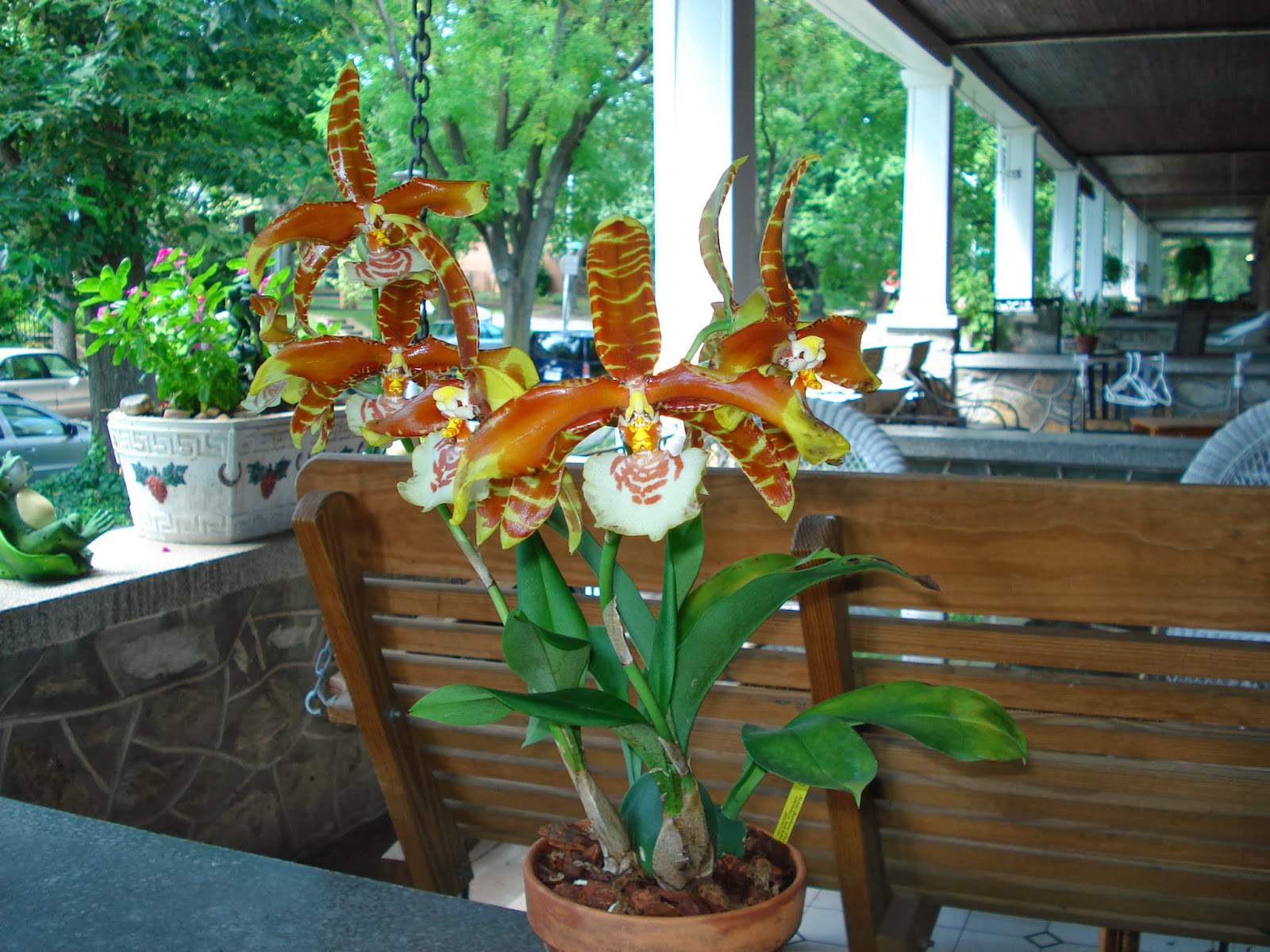This is the famous Angraecum sesquipedale, known also as the Darwin orchid, a native of Madagascar. This is Arne's current pride and joy. He would keep coming to me and say, "See how long the spurs are! What a specimen!". I would say, "Fantastic". Well since putting this blog together, I find this Angraecum very interesting indeed! How do you think the flower gets pollinated? The white flower has a 12 inch spur or nectary that Darwin predicted a moth with equally long proboscis would be the pollinator. A highly specialize pollinator. Of course, years later, such a moth was discovered, Xanthopan morganii.
Fascinating how nature finds a way to survive. I never realized how exotic and fragile orchids were. Imagine if the moth dies out, who will pollinate Angraecum sesquipedale? I suppose that is why so many orchids are extinct in the wild even before they get discovered. Thanks to the encroachment of humankind into jungles and forest... fragile is the balance of life.
 |
| Angraecum sesquipedale with Anthony |
We thought you should have a sense of proportion. Here's our dog, Marcus Anthony, we call him Anthony for short. He is a 77 lbs English Shepherd and posed nicely next to the Angraecum sesquipedale in our study. Just a note, Anthony will appear rather regularly in this blog.
Above a great close up of Arne's pride and joy. The first bloom (in the front) appeared 1 week ago and the second bloom (in the back) opened 3 days ago. These blooms give off a pleasant fragrance. By the way, Arne bought this particular good specimen from a reliable company online. If you are interested to know, just write and we'll try to remember which one!























